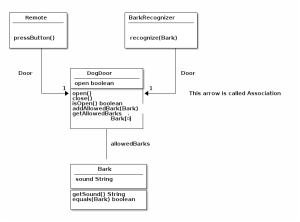Head First Object Oriented Analysis & Design (OOAD) Chapter 04
This is the fourth Chapter learning of Head First Object Oriented Analysis & Design (OOAD) by Bertt Mclaughlin,Gary Pollice and David West
This markdown file is my notes for the fourth chapter, not sure if any copyright issues are there.
Analysis
BULLET POINTS
- Analysis helps you ensure that your software works in the real world context, and not just in a perfect environment.
- Use cases are meant to be understood by you, your managers, your customers, and other programmers.
- You should write your use cases in whatever format makes them most usable to you and the other people who are looking at them.
- A good use case precisely lays out what a system does, but does not indicate how the system accomplishes the task.
- Each use case should focus on only one customer goal. If you have multiple goals, you will need to write multiple use cases.
- Class diagrams give you an easy way to show your system and its code constructs at a 10,000 – foot view.
- The attributes in a class diagrams usually map to the member variables of your class.
- The operations in a class diagrams usually represent the method of your classes.
- Class diagrams leave lots of details out, such as class constructors, some type information, and the purpose of operations on your classes.
- Textual analysis helps you translate a use case into code-level classes, attributes, and operations.
- The nouns of a use case are candidates for classes in your system, and the verbs are candidates for methods on your system’s classes.
- Delegations shields your object from implementation changes to other objects in your software.
UML Terms
allowedBarks: Bark[*]
[] indicates the multiplicity of an attributes: how many of a certain type that the attributes can hold.
[*] the * indicates that allowedBarks can hold an unlimited number of Bark object.
Class Diagram
A sample class diagram is as below
Association : A solid line from one class to another is called an association. It means that one class is associated with another class by reference, extension, inheritance etc.

I like this book and your blog encourage us. Thanks.
Thanks for the appreciation, will try to improve.